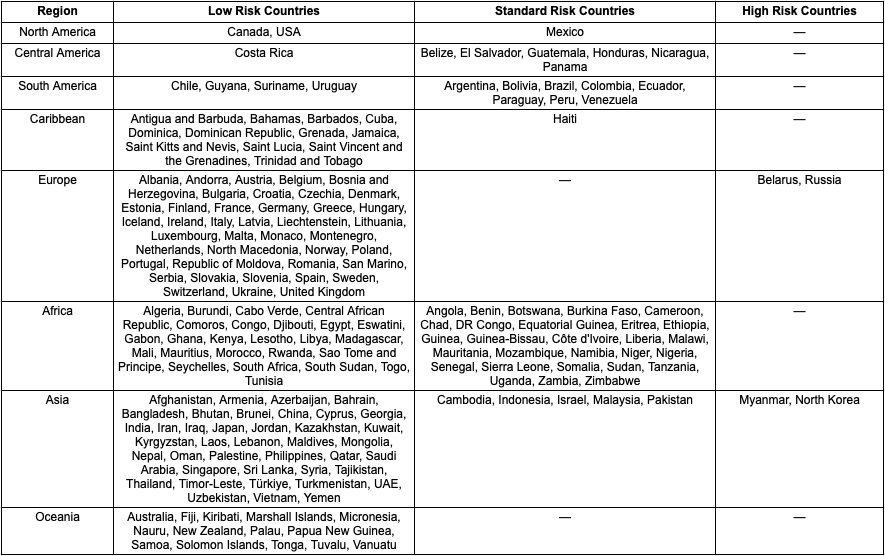Get a Demo
About one month earlier than expected, the European Commission has released the EUDR country risk benchmarking.
The classification of high-risk countries according to EU or UN sanctions follows the information that was previously leaked by EU diplomats to Euractiv.

Only four countries are labeled high risk under the benchmarking and will be subject to more stringent checks:
50 countries, including Brazil, Côte d'Ivoire and Indonesia, are classified as standard risk.
A total of 140 countries are classified as low risk. This includes all EU Member States, the United States, Canada, China, Ghana, Thailand, and others.
Refer to the table below to see the risk categories of all countries.

The classification of countries as low or standard risk is based on the following indicators:
The benchmarking is based on the latest available forest cover and deforestation data from the FAO Global Forest Resources Assessment and data from FAOSTAT on cropland expansion and commodity production.
The deforestation rate is derived from the FAO Global Forest Resources Assessment for the year 2020. This dataset is based on reporting made by FAO Member States.
The expansion of agricultural land and production trends are based on FAOSTAT data. Land use statistics of crops are used to indicate agricultural land expansion. For cattle and wood, production data is used since there are no direct land use statistics.
Countries subject to sanctions on imports or exports by the UN Security Council or the EU Council are classified as high risk, as it is impossible to conduct due diligence along the value chains in these countries.
There are three pathways for a country to be classified as low risk:

All further countries are classified as standard risk.
The benchmarking process will be dynamic, with a first review scheduled for 2026.
More details on the country benchmarking can be found here.

CEO
.svg)
Caroline is an experienced data scientist with a management degree from TU Munich and a degree in earth observation from the University of Würzburg, which is co-chaired by the German Aerospace Center (DLR). She has worked as a data scientist in the areas of nature conservation and land use change monitoring at WWF, the German Centre for Integrative Biodiversity Research (iDiv), and at tech companies such as Celonis and Deloitte.
